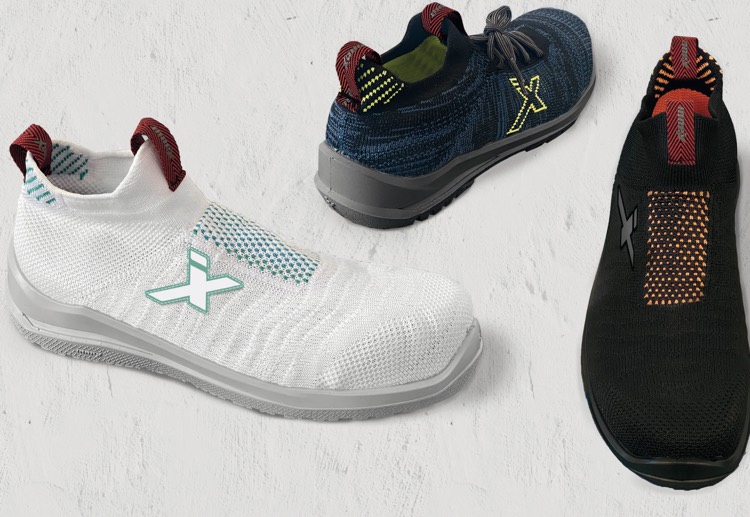
Category: FASHION ACCESSORIES
Country: Italy
By Haydn Davis
14th February 2024
Brescia - Seamless knitting machine specialist Santoni has launched a new, 3-D safety shoe-upper concept which, as well as safeguarding the wearer's foot, is also designed to safeguard the planet.
As Santoni notes, the manufacturing process behind footwear manufacturing releases large amounts of carbon dioxide. The company's latest figures claim it is responsible for 1.4% of greenhouse gas emissions globally, meaning that a pair of sneakers generates on average 30 pounds of CO2 emissions.
According to estimates from the World Trade Organisation (WTO), around 23.2 billion pairs of shoes were produced in total in 2021, approximately nine million tons by weight.
"It is therefore fundamental for the footwear industry, to find sustainable solutions to reduce, recover and recycle waste efficiently," says Santoni.
"It is necessary to create products differently, rethinking all manufacturing and raw material supply processes, to redefine the future of production.
"That’s the mission that led Santoni when it came to create the first 3D work shoe upper with its XT-Machine."
The goal was to knit a shoe upper that could perfectly adapt to the foot and protect it during work, guaranteeing utmost breathability and comfort, with minimal impact on the environment.
For the new safety shoe, Santoni selected its XT-Machine which enables the production of three-dimensional uppers in single- or double-layer fabric, which offer comfort, lightness, performance and high quality, in just ten minutes and without any waste.
By mapping the foot, the machine can position high-performance and completely recyclable yarns in the desired areas. This includes the use of TPU yarns with high resistance to abrasion or anti-cut in the areas of greatest stress, and yarns made up of natural fibres where there is direct contact with the foot, to simultaneously guarantee maximum comfort and protection.
After the knitting phase, the upper is almost ready for the application of the sole, thereby ensuring a shorter manufacturing process that reduces times and transportation of fabrics and accessories.
Santoni says that this approach offers several advantages, including faster production and greater flexibility, which means less energy use and a reduction in the amount of CO2 generated.
A further advantage is the significant reduction in raw material waste. The shoe is only made up of the yarns necessary to produce the upper, eliminating waste material altogether and the subsequent disposal of scraps.
"This shows that technology can be an essential tool to reduce the impact of the footwear industry on the environment, and this is an important step towards a more sustainable future," Santoni adds.
The single-cylinder XT-Machine is an intarisa electronic knitting machine with 4 reciprocating feeds and 2 selection points (3 technical ways) per feed and per rotating sense for the production of intarsia products with breathable mesh areas with cushioning and/or transfer stitch areas knitted in sculpted terry.
The machine knitting head is equipped with cams as well as a special-patented chain linking system which allows only preselected needles to be driven to the stitch cam for knitting.
Courtesy: Knittingtradejournal.com
Copyrights © 2025 GLOBAL TEXTILE SOURCE. All rights reserved.